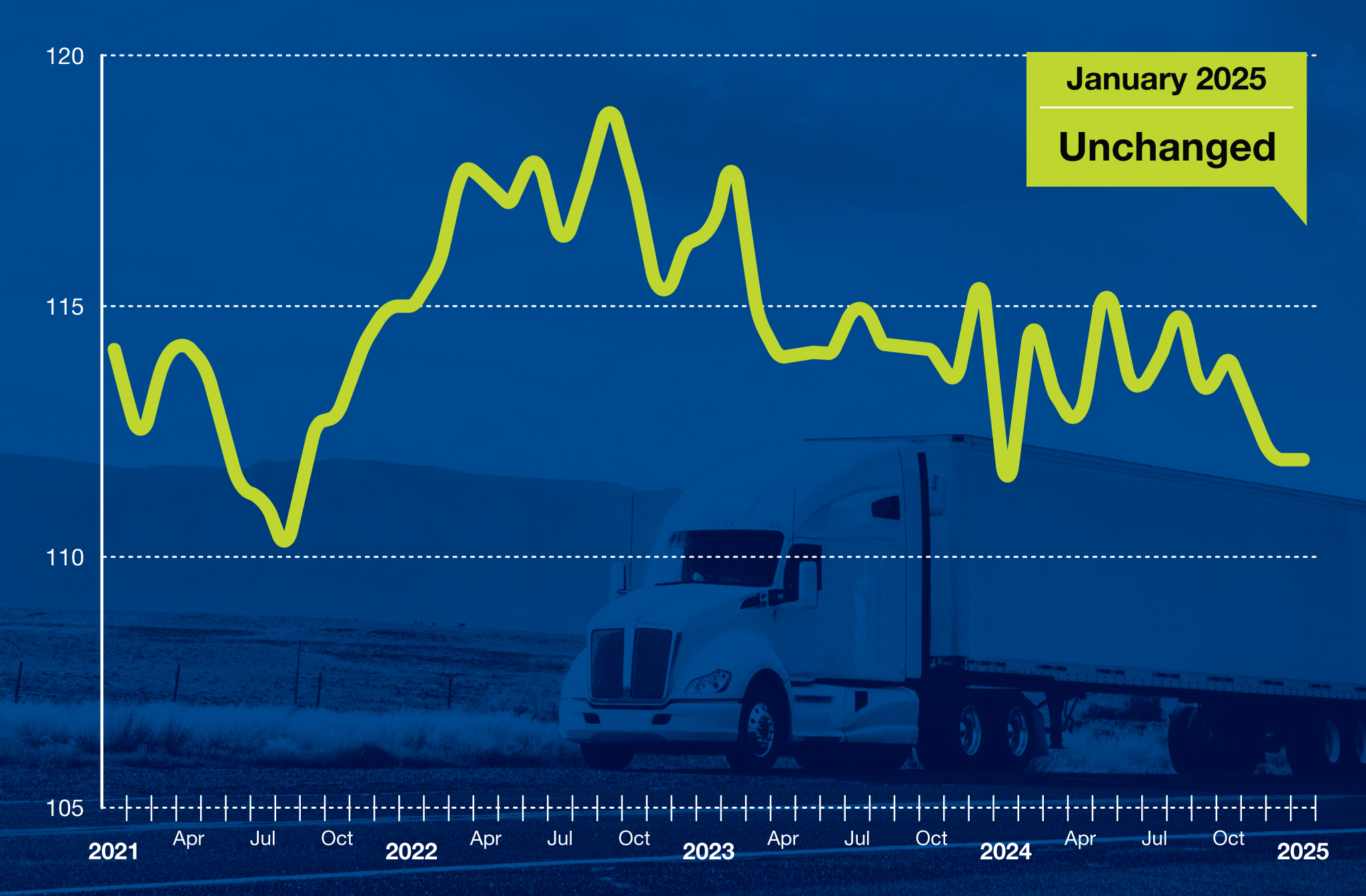Washington — Trucking activity in the United States was unchanged in January, despite a myriad factors that depressed freight volumes around the country, according to the American Trucking Associations’ advanced seasonally adjusted For-Hire Truck Tonnage Index.

“After declines in November and December totaling 1.7%, tonnage was unchanged in January” said ATA Chief Economist Bob Costello. “This outcome is impressive considering the massive winter storm that brought cold temperatures and significant snowfalls to large parts of the country, including those that rarely see such storms. Furthermore, the terrible wildfires in California likely also caused freight disruptions. Softness in manufacturing and retail sales continue to be a drag on truck freight volumes as well, so the fact tonnage was flat is a positive sign.”
In January, the ATA advanced seasonally adjusted For-Hire Truck Tonnage Index equaled 111.9 the same as December. The index, which is based on 2015 as 100, was up 0.3% from the same month last year, the first year-over-year increase since August.
The not seasonally adjusted index, which calculates raw changes in tonnage hauled, equaled 110 in January, 1.1% above December’s reading of 108.9.
ATA recently revised the seasonally adjusted index back five years as part of its annual revision.
Trucking serves as a barometer of the U.S. economy, representing 72.7% of tonnage carried by all modes of domestic freight transportation, including manufactured and retail goods. Trucks hauled 11.27 billion tons of freight in 20241. Motor carriers collected $906 billion, or 76.9% of total revenue earned by all transport modes.
Both indices are dominated by contract freight, as opposed to traditional spot market freight. The tonnage index is calculated on surveys from its membership and has been doing so since the 1970s. This is a preliminary figure and subject to change in the final report issued around the 5th day of each month. The report includes month-to-month and year-over-year results, relevant economic comparisons, and key financial indicators.